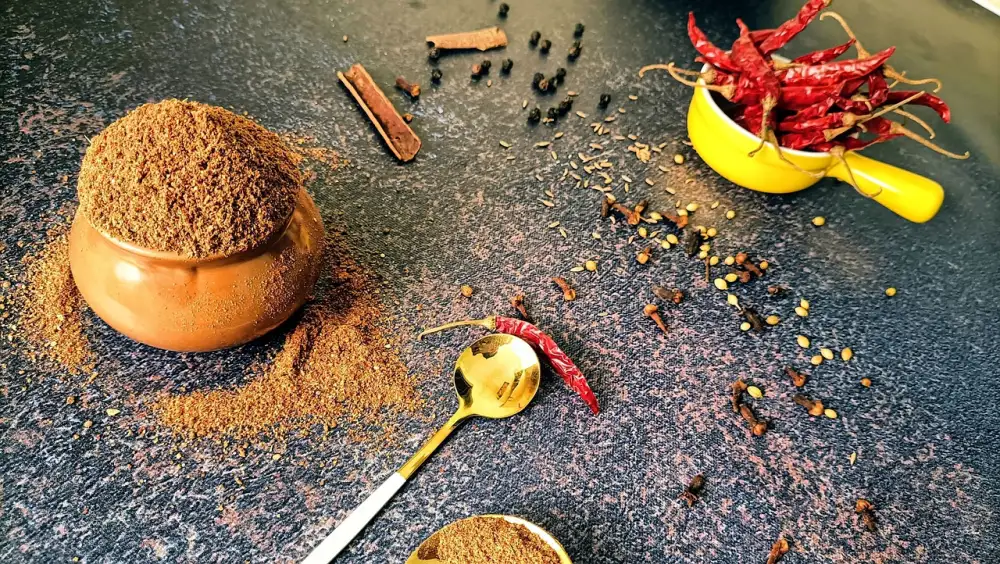Unveiling the Exotic Flavors of Ras el Hanout: A Spice Mix from North Africa

Ras el Hanout, a fragrant and versatile spice blend originating from North Africa, particularly Morocco, is a staple in the region's cuisine. The name translates to "top of the shop," indicating a premium mixture of the best spices a merchant has to offer. This complex blend typically consists of over 20 different spices, carefully combined to create a unique flavor profile that adds depth and richness to dishes. Ras el Hanout is known for its warm, aromatic notes and subtle heat, making it a popular choice for seasoning meats, vegetables, rice dishes, and more.
Origins and History of Ras el Hanout
Ras el Hanout, a fragrant spice blend originating from North Africa, particularly Morocco, translates to "top of the shop" in Arabic. This name reflects the mix's premium quality and diverse ingredients sourced from the best spices available. Historically, Ras el Hanout was crafted by North African spice merchants as a signature blend showcasing their finest offerings. Over time, each merchant developed their unique recipe, resulting in variations that can contain up to 30 different spices, including cardamom, cumin, cinnamon, turmeric, ginger, and more. The complex flavors of Ras el Hanout have made it a staple in North African cuisine and beyond.
Ingredients in Ras el Hanout
Ras el Hanout, a traditional spice blend from North Africa, is renowned for its complex and aromatic flavors. This exotic mix typically consists of a combination of various spices, herbs, and sometimes even flowers. While the exact ingredients can vary from region to region and from one spice merchant to another, common components include cumin, coriander, cinnamon, ginger, nutmeg, turmeric, paprika, cardamom, cloves, allspice, and black pepper. Some versions may also incorporate more unusual additions like dried rose petals or lavender. The intricate balance of these ingredients gives Ras el Hanout its unique and versatile flavor profile that enhances a wide range of dishes.
Culinary Uses of Ras el Hanout
Ras el Hanout is a versatile spice blend that adds depth and complexity to a wide range of dishes. Its warm, aromatic flavors make it a popular choice for seasoning meats such as lamb, chicken, and beef. It can also be used to enhance the flavor of stews, tagines, and couscous dishes. In vegetarian and vegan cooking, Ras el Hanout can elevate the taste of roasted vegetables, lentil dishes, and chickpea-based recipes. Additionally, it can be sprinkled over rice or used as a rub for grilled seafood. The possibilities are endless when it comes to incorporating Ras el Hanout into your culinary creations.
Health Benefits of Ras el Hanout
**Health Benefits of Ras el Hanout**
Ras el Hanout not only adds a burst of flavor to dishes but also offers various health benefits. This North African spice mix is rich in antioxidants due to the combination of spices like cumin, coriander, and cinnamon. These antioxidants help combat inflammation in the body and may reduce the risk of chronic diseases.
Moreover, many of the individual spices found in Ras el Hanout have been linked to improved digestion. Ingredients like ginger and turmeric can aid in digestion and alleviate gastrointestinal discomfort. Additionally, some studies suggest that certain components in these spices may have antimicrobial properties, potentially helping to fight off harmful bacteria.
Furthermore, Ras el Hanout contains spices known for their potential ability to regulate blood sugar levels. Cinnamon, for example, has been shown to improve insulin sensitivity and lower blood sugar levels in some individuals. This can be beneficial for those managing diabetes or looking to stabilize their blood sugar levels.
Incorporating Ras el Hanout into your cooking not only enhances the taste of your dishes but also provides a range of potential health benefits due to its diverse array of spices with medicinal properties.
How to Make Ras el Hanout at Home
To make Ras el Hanout at home, you will need a blend of various spices that are commonly found in North African cuisine. While the exact ingredients can vary, a typical recipe may include a mix of ground cumin, coriander, cinnamon, ginger, paprika, cardamom, nutmeg, allspice, cloves, and black pepper. Additional ingredients such as dried rose petals or lavender may also be included for a unique floral note. To create your own Ras el Hanout blend, simply combine these spices in the desired proportions and store in an airtight container away from light and heat to preserve its flavors. Experiment with different ratios to customize the blend to suit your taste preferences.
Where to Buy Authentic Ras el Hanout
When looking to buy authentic Ras el Hanout, it is best to seek out specialty spice shops, Middle Eastern or North African markets, or online retailers that specialize in exotic spices. These sources are more likely to carry high-quality Ras el Hanout made with traditional ingredients and preparation methods. Additionally, purchasing from reputable sellers who source their spices directly from regions like Morocco or Tunisia can ensure the authenticity and freshness of the blend. It's important to read reviews and check for certifications to guarantee the quality of the Ras el Hanout you are purchasing.
Popular Recipes Featuring Ras el Hanout
1. Moroccan Lamb Tagine: This traditional dish combines tender lamb, apricots, almonds, and a blend of spices including Ras el Hanout. The spice mix adds depth and complexity to the stew, creating a rich and aromatic flavor profile.
2. Spiced Couscous with Vegetables: Ras el Hanout is often used to season couscous dishes in North African cuisine. This recipe pairs fluffy couscous with roasted vegetables like bell peppers, zucchini, and carrots, all seasoned with the warm and fragrant spice blend.
3. Ras el Hanout Roasted Chicken: A simple yet flavorful dish where a whole chicken is rubbed with Ras el Hanout before roasting to perfection. The spice mix forms a crispy and fragrant crust on the outside while keeping the meat juicy and tender inside.
4. Chickpea and Spinach Stew: Vegetarians can enjoy the exotic flavors of Ras el Hanout in this hearty stew featuring chickpeas, spinach, tomatoes, and aromatic spices. The spice blend elevates the dish with its unique combination of sweet, savory, and spicy notes.
These recipes showcase the versatility of Ras el Hanout in both meat-based and vegetarian dishes, adding a touch of North African flair to your culinary repertoire.
In conclusion, Ras el Hanout is a versatile and aromatic spice blend that adds depth and complexity to dishes, making it a staple in North African cuisine. Its rich history, unique combination of ingredients, and numerous health benefits make it a valuable addition to any kitchen. Whether purchased from a trusted source or made at home, Ras el Hanout offers a taste of exotic flavors that can elevate both savory and sweet recipes. Embrace the culinary adventure by incorporating this exotic spice mix into your cooking repertoire and experience the magic of North African cuisine on your plate.
Published: 16. 04. 2024
Category: Food



